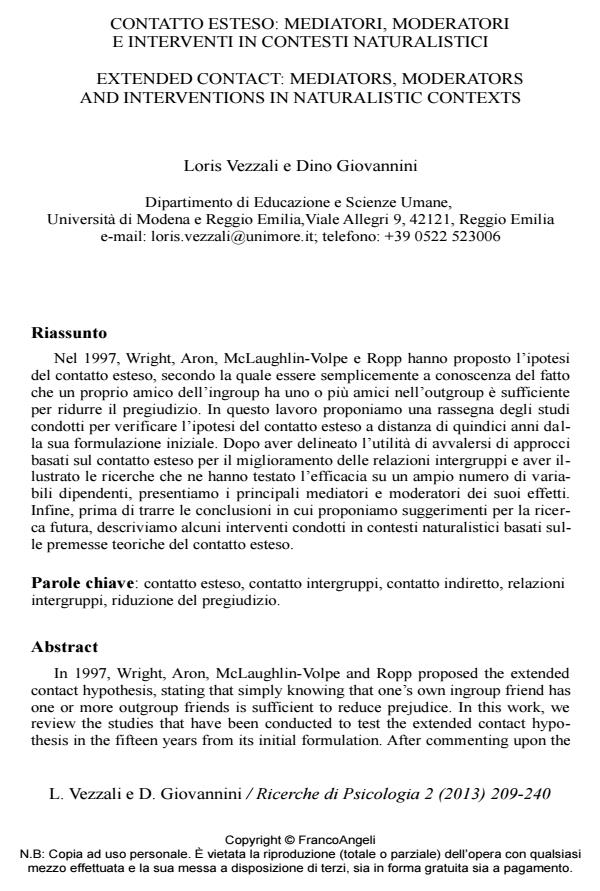Extended contact: mediators, moderators and interventions in naturalistic contexts
Journal title RICERCHE DI PSICOLOGIA
Author/s Loris Vezzali, Dino Giovannini
Publishing Year 2013 Issue 2013/2
Language Italian Pages 32 P. 209-240 File size 304 KB
DOI 10.3280/RIP2013-002001
DOI is like a bar code for intellectual property: to have more infomation
click here
Below, you can see the article first page
If you want to buy this article in PDF format, you can do it, following the instructions to buy download credits

FrancoAngeli is member of Publishers International Linking Association, Inc (PILA), a not-for-profit association which run the CrossRef service enabling links to and from online scholarly content.
In 1997, Wright, Aron, McLaughlin-Volpe and Ropp proposed the extended contact hypothesis, stating that simply knowing that one’s own ingroup friend has one or more outgroup friends is sufficient to reduce prejudice. In this work, we review the studies that have been conducted to test the extended contact hypothesis in the fifteen years from its initial formulation. After commenting upon the usefulness of approaches based on extended contact to improve intergroup relations and introducing research examining its effectiveness on a wide number of outcome variables, we present the main mediators and moderators of its effects. Finally, before drawing the conclusions where we offer suggestions for future research, we describe some interventions conducted in naturalistic contexts based on the theoretical premises of extended contact.
Keywords: Extended contact, intergroup contact, indirect contact, intergroup relations, prejudice reduction.
Loris Vezzali, Dino Giovannini, Contatto esteso: mediatori, moderatori e interventi in contesti naturalistici in "RICERCHE DI PSICOLOGIA " 2/2013, pp 209-240, DOI: 10.3280/RIP2013-002001